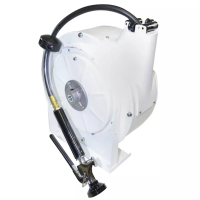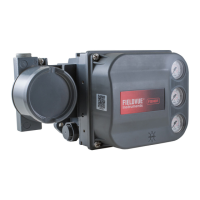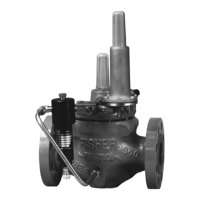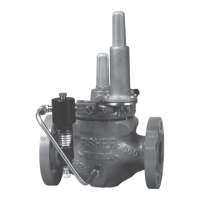Quick Start Guide
D103214X012
DLC3010 Digital Level Controller
February 2016
24
Note
If you are able to precisely observe individual input states, the Two-Point calibration may be used instead of Min/Max.
If you are unable to complete the Min/Max or Two Point Calibration, set the lowest process condition and Capture Zero. Run Trim
Gain at a process level of minimum 5% above the Lower Range Value.
If the measured output doesn't come off the low saturation value until the level is considerably above the bottom of
the displacer, it is possible that the displacer is overweight. An overweight displacer will rest on the lower travel stop
until sufficient buoyancy has developed to allow the linkage to move. In that case, use the calibration procedure for
overweight displacers below.
After the initial calibration:
For a level application— Go to the Sensor Compensation menu and use 'Enter constant SG' to configure the instrument
for the target process fluid density.
For an interface application— Change the PV mode to Interface, verify or adjust the range values presented by the
Change PV mode procedure, and then use 'Enter constant SG' to configure the instrument for the SGs of each of the
target process fluids.
For a density application— Change the PV mode to Density, and establish the desired range values in the 'Change PV
mode' procedure.
If the target application temperature is considerably elevated or depressed from ambient, refer to the DLC3010
Instruction Manual (D102748X012) for information on temperature compensation.
Note
Information on computing precise simulation of this effect is available in the Simulation of Process Conditions for Calibration of
Fisher Level Controllers and Transmitters instruction manual supplement (D103066X012), available from your Emerson Process
Management sales office or at www.fisher.com.
Calibration with an Overweight Displacer
When the sensor hardware is sized for greater mechanical gain (as it is in some interface or density measurement
applications), the dry displacer weight is often greater than the maximum permissible load on the torque tube. In this
situation it is impossible to 'capture' the zero buoyancy rotation of the torque tube, because the linkage is lying on a
travel stop at that condition.
The 'Capture Zero' routine in the Partial Calibration menu group will therefore not function correctly in the target PV
modes of interface or density when the displacer is overweight.
The Full Calibration routines: Min/Max, TwoPoint, and Weight, will all work correctly at the actual process conditions
when in interface or density mode, because they backcompute the theoretical zerobuoyancy angle instead of
capturing it.
